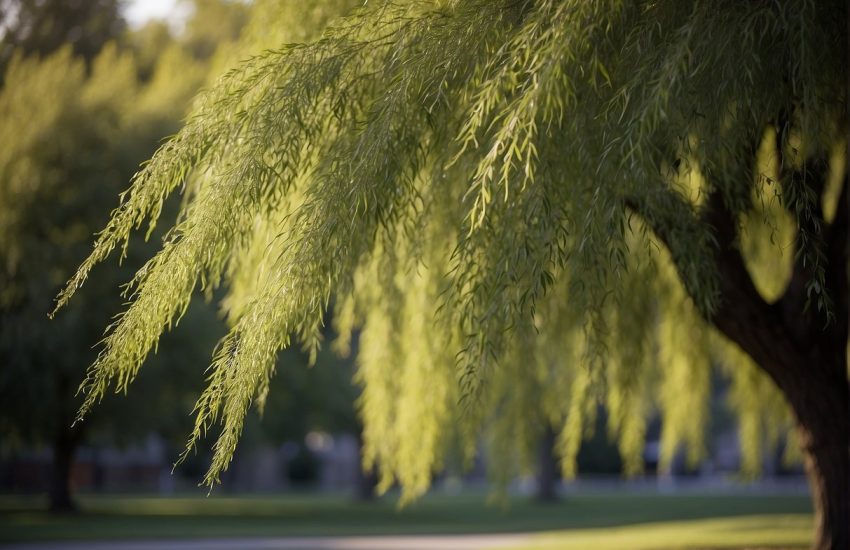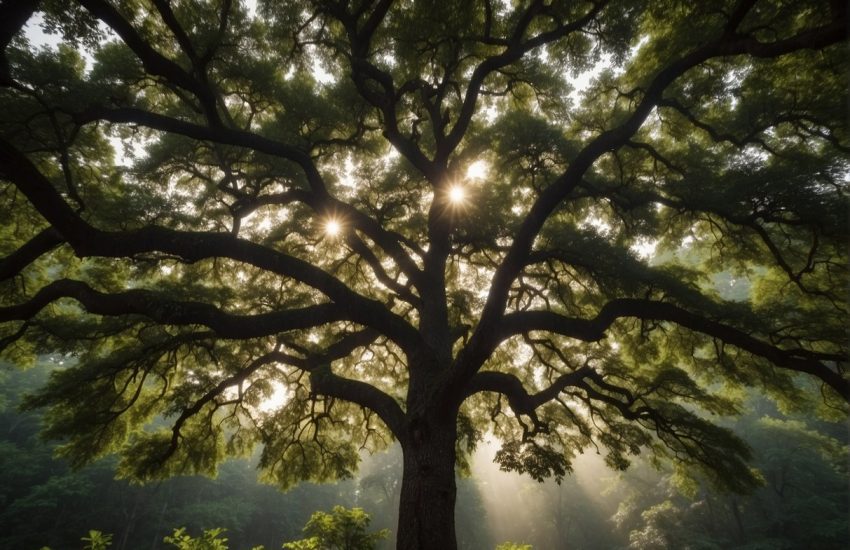10 Ornamental Trees To Grow In New Jersey
A tremendous variety of ornamental trees thrive in New Jersey, and the curb appeal is unmatched from its southernmost point to its northern border. New Jersey soil produces some of the finest dogwoods, hibiscus, cherries, lilacs, maples and other ornamental trees. Please read on to learn more.
1. Flowering Dogwood
This beautiful tree is a staple in landscapes throughout the state. You can select from a choice of colorful flowers such as white, red, and pink. A Dogwood Tree thrives in the 5 through 9 Hardiness Zones. Expect the tree to grow to approximately 25 feet in height. They will spread to a width of about 25 feet.
The plant exudes appealing characteristics all year long from the showy flowers in the spring to the summer barrage of foliage right through to the fall. Upon the start of autumn, fall fruit and winter branching emerge. The trees can be planted in a grouping on the property to create an array of colors. Flowering Dogwoods require little maintenance. Its average lifespan is around 80 years.
2. Hibiscus
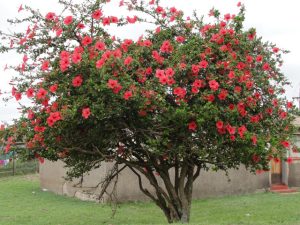
This lovely species is easy to identify by its large showy red, pink, white, or multi-color flowers. Homeowners enjoy a bloom that continues nearly non-stop beginning in the mid summer straight to the first frost.
It is super easy to grow. The plant thrives in places with moist organic soil. Hibiscus is well-suited in areas near water and ponds where extreme moisture can be harmful to other types of plants.
Hibiscus Midnight Marvel is a variation of hibiscus with large 8 to 9 inch flowers. The colorful flowers are pure red with purple, maple-like foliage. One difference is that this plant has an extended bloom time.
The gorgeous round blooms are visually appealing, and the butterflies and hummingbirds find it compelling. Try Hibiscus Midnight Marvel for garden borders and other focal points in the landscape.
3. Purple Plum
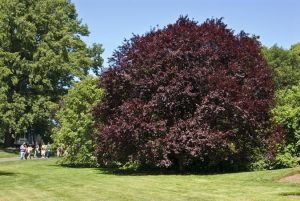
This flowering plum tree is favored for its fast-growing characteristic. As to its height at maturity, the plant can reach 15 to 25 feet high. The crown of the tree has a round shape and grows to a typical width of 15 to 25 feet.
The Flowering Plum Tree produces vibrant purplish leaf foliage with an aromatic white or pink colored flowers. Expect the blooms to emerge in the spring. The plum tree prefers heat, and it will thrive in even warmer winter and early spring weather in NJ. By early summer, the fruit of the tree will grow faster, and it will produce more plums.
Purple Plum Trees are hardier than many other fruits. It’s able to stand up to nearly all kinds of insects and diseases. You will enjoy every characteristic about your Purple Plum Tree, and it is about as carefree a fruit tree as you could want, and its relatively small size can accommodate most any size property.
4. Flowering Cherry

Flowering Cherry Trees are an amazing choice in zones 5 to 8, and New Jersey is no exception! The attractive flowering tree grows to a height of 20 to 30 feet. from full sun exposure, and bloom from Late March through April. Blooms start as dark pink buds, and get lighter until they are white in appearance.
There are many varieties of cherry trees that produce equally as distinctive flowers and fruits. The most commonly talked about cherry trees are Sweet Cherry Trees, Cherry Blossom Trees, Weeping Higan Cherry Trees, Sour Cherry Trees, Chokecherry Trees, and others.
5. Silverbell
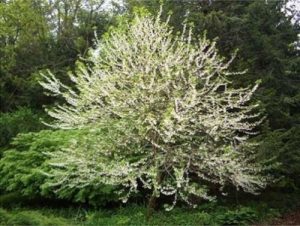
Silverbell can be categorized as a small tree and, in some ways, a large shrub. The plant can grow anywhere from 16 to 55 feet in height and occasionally taller. It has interesting leaves that are moderately long and broad. This ornamental tree grows pretty flowers that will attract attention in any yard.
The flowers can be white or a pale pink in color. They will appear in open clusters containg 2 or up to 6 flowers. The fruit of the Silverbell has a distinctive, oblong dry drupe. Silverbell plants are easy to care for and will thrive with the following simple steps.
Its light requirements are flexible in that the plant does well in partial shade, partial sun, or full sun. The water needs during planting could best be described as mostly dry. Silverbells can grow up to 30 to 40 feet in height and about 20 to 35 feet in spread.
6. Tulip Tree
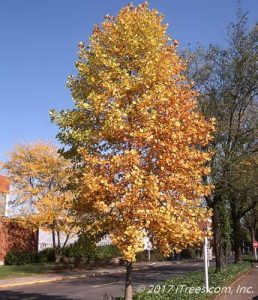
Here is another ornamental tree that will look glorious in the landscape. The Tulip Poplar, which is frequently simply called a Tulip Tree, is low maintenance. It is popular in New Jersey and thrives in the state’s hardiness zone.
One of the noteworthy characteristics about the tree is that it grows very quickly. Not only does it grow quickly, but it also gets extremely large. Make sure you have a large enough piece of property to accommodate a Tulip Tree. It might be too big for a small to average size yard.
Tulip Trees have a long straight trunk. Interestingly, there are little to no branches until much higher up on the trunk making it a more unique species. The trees are amongst the tallest and attractive hardwoods. The crown of the tree spreads more as it gets older.
Its large showy flowers are colorful tulip-shaped blooms. This deciduous tree can grow to 150 feet with a potentially larger height in some cases. Trees possess a narrow crown and star-shaped foliage. The trees produce waxy smooth leaves.
In the fall, the leaves turn a bright gold. Abundant yellow-orange flowers will begin to emerge about 50 or more feet up the tree. Their seedheads stay after the leaves have fallen off the tree.
7. Dwarf Trees
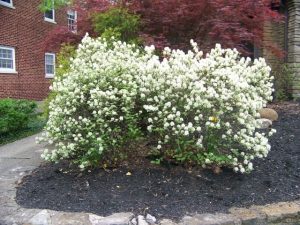
The Cornus genus covers about 30 or more species of dogwood plants. Dogwoods are categorized by their blooms be it blossoms, berries, or bark. Many of them are deciduous small trees or shrubs. They are perennials, and some are part of the evergreen family.
Venus Dogwood is one of many species that feature small heads of flowers surrounded by bracts. It has large petal-like bracts which are usually white. Other dogwoods may have more clusters of flowers, yet Venus is always a great choice because of its beauty and more modest size. Gorgeous white blooms start to emerge in the late spring and last into the early summer.
Dwarf Trees are sometimes the perfect solution to fill the smaller spaces in the garden. They will certainly make a dramatic statement in the yard as the bright burst of flowering beauty add grace and stature.
The Hazel Dwarf species which match the zone have rounded leaves edged with double-serrate margins. Hazels have a bloom period beginning in early spring. It continues into the early summer. The fruits are 1 inch long nuts and are surrounded by a husk. The species requires little maintenance.
8. Oak
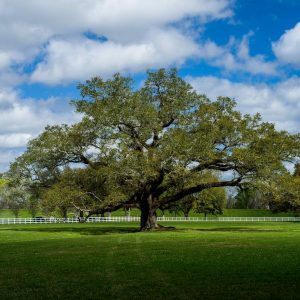
There is a wide range of Oak Trees that are aptly grown in New Jersey. The trees are large and enjoy a long lifespan. Looking at the local species, Oaks can be northern red, scarlet, pin, white, swamp white, black, chestnut, bear, and dwarf. Each of these Oak varieties are constructed hardy trees, and they are perennials.
The New Jersey state tree is The Majestic Red Oak Tree. It is known for two particular characteristics. One is its long, flat, pointy leaves. The other is its acorns, the nuts that this tree produces without fail every fall! Acorns are round, and they are topped off with a dark brown little cap.
The upper segment of the leaf is a dark green in color with a shiny texture. On the bottom part, leaves have a grayish tone and a leathery feel. In time for the changing of the color of the leaves season in NJ, the leaf colors change to lovely shades of orange, red, and a goldfish yellow.
As to planting recommendations, Oak Trees can be planted a minimum of 15 to 30 feet from any structure including your home. If it is a smaller oak species, you can plant it at least 15 feet from the structure. Many Oak Trees have a spread of approximately 50 feet or more.
9. Magnolia

Flowering Magnolia Trees grown in New Jersey are as pretty as a picture! Sweetbay Magnolia can be planted in areas where you want a beautiful flowering plant and space is a bit tight. Magnolias need full or partial sun. Plant it in slightly moist or wet soil.
The enchanting Umbrella Magnolia Tree produces a tiny cone-shaped fruit. An abundance of them will begin to grow in the early fall. The flowers can be pink, purple, yellow, or white. Magnolias have thick leaves. and the tree flowers in the early spring. The magnolia trees and shrubs have a pleasant light fragrance. The size and growth rate of a large Magnolia Tree is 60 to 80 feet in height with a spread of 30 to 50 feet, and it is a fast-growing perennial.
10. Peach
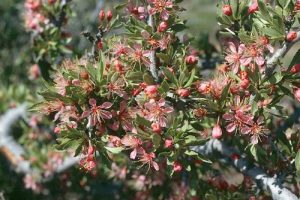
Although peaches are grown across the state, there are three counties that are particularly known for growing peaches. Cumberland County, Atlantic County, and Gloucester County are in the southern area of the state, and the region grows some of the best Jersey-fresh peaches in the country.
There are several varieties of Peach Trees from which to choose. The John Boy is a favorite, snd the peach called White Lady, is known for its low-acid level. The Lady Nancy is a highly aromatic fruit. Then, there is the Arctic Star and the Artic Jay that both are harvested in the middle of the season.
Peach Trees are moderately easy to grow though they do require more care than some other fruit trees. They They will typically require regular summer watering. The trees like well-drained soils. It is recommended that you treat them with a high nitrogen fertilizer.
Routine fruit thinning and pest control will help to keep your Peach Tree healthy and fruitful! Peaches in New Jersey are typically ready for picking beginning in July and straight through until September.

